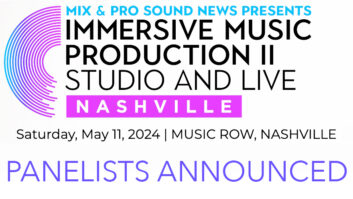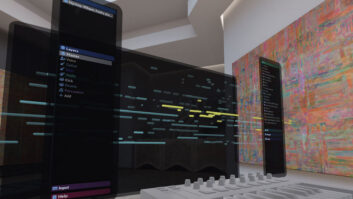
Unless you live under a rock, you’ve probably noticed the rise in popularity of modular synths over the past few years. I got into it about seven or eight years ago, and I fear I am living proof of just how addictive they can be. I realize I could be accused of a certain amount of self-justification in this article, but trust me, they really are a useful tool for mix engineers.
First, a quick overview for the uninitiated. There are two common set ups, of which the one referred to as “East Coast” style is the more traditional. This is so-called because Moog synths were built on the east coast of the USA, as opposed to the slightly more esoteric Buchla synths which originated on the west coast at about the same time (‘west coast’ style, although hopefully you’d worked that out). The pros and cons of each method can cause some pretty heated debates in the world of synth-heads—debates in which neither Bob Moog nor Don Buchla were remotely interested.
Anyway, I digress.
There are few basic parts that are common to the traditional setup. You start with a voltage-controlled oscillator (VCO). This permanently generates a wave form—sine, triangle, saw and square are generally your choices—the pitch of which is decided by the control voltage (CV) that you send it from your keyboard or DAW. Normally you mix two or three of these VCOs together and then feed them into a resonant filter which shapes the sound by taking away harmonics, which gives us the term ‘subtractive synthesis.’ You’ve still got a permanent tone, so next in the chain is a voltage-controlled amplifier (VCA), which you normally turn down to silent so it can be turned up again by modules called envelope generators (often ADSR-style, if you’re familiar with hardware synths) which fire whenever they receive a ‘gate’ signal—which is triggered when a key on your keyboard is pressed (or, again, from your DAW).

That’s the basics, but modular synthesis gets more interesting when you introduce different sources of modulation. Pretty much everything you can think of can be modulated by everything else, with low-frequency oscillators (LFOs), ring modulators and various styles of envelope generator all being part of the arsenal, but that’s another article.
“But,” I hear you wearily ask, “how is this useful to mix engineers?” Well…
- Better synth sounds. If you find yourself being handed less-than awesome synth sounds to mix, then you’ve got a simple solution to that. Remember that a new filter can cost you less than £100, and each new filter opens up a whole raft of different tonal possibilities, so even a modest modular system can give you a wide palette of great analogue synth sounds. Ask for the MIDI along with the audio and you can quickly create sounds that not only lift the track but also make the mix easier.
- Better filters. I know this sounds like it goes with the previous paragraph, but I mean something different here. In this application, you’re using the filters in your modular system like the filters on an EQ—because if you want to take the top off your bass track, you can obviously do it quickly with a nice clean plug-in, but with an extra minute of effort and a Moog low-pass filter, you’ve added some real character to your mix as well.
- Extremely tweakable analogue effects. Although you can do everything in the box these days if you want to, sometimes you don’t. For these out-of-the-box moments, modular synths offer a lot of really fun, tweakable and fantastic-sounding effects, from simple spring reverbs (with up to three tank sizes that you can flick between) to deep granular delays. There are amazing sounding phasers, and tube VCAs that give you incredible distortion effects. If you think that you—or your clients—might enjoy manually playing effects instead of automating a plug-in, then a small Eurorack (3U modular synths) set-up might be right up your street. It’s just like building a small collection of guitar pedals, but one to which you only need to add an oscillator and you’ve got yourself an analogue synth.
The Mix Consultancy: Creating Space in a Mix
It’s beyond the scope of this article to start recommending specific modules (feel free to contact me at themixconsultancy.com if you want advice on this—I can talk modular for days!) but perhaps you will now see a modular synth is not just a hipster’s plaything (although it is also that), or a synth-head’s money-pit (yeah, it’s definitely that, too), but also a useful weapon in the arsenal of a mix engineer.
Modular synths are becoming a useful weapon in the arsenal of a mix engineer.







